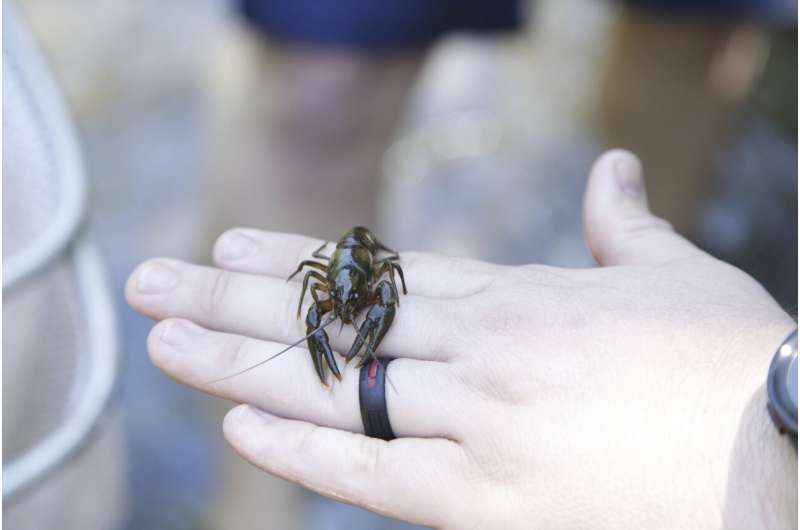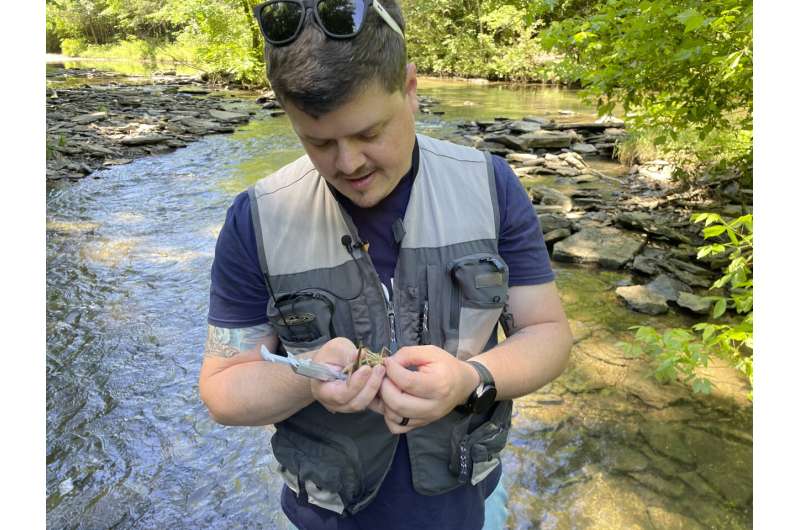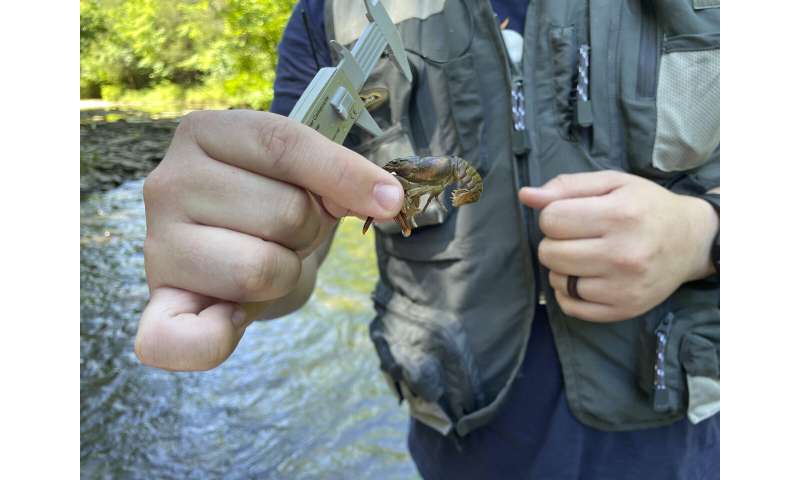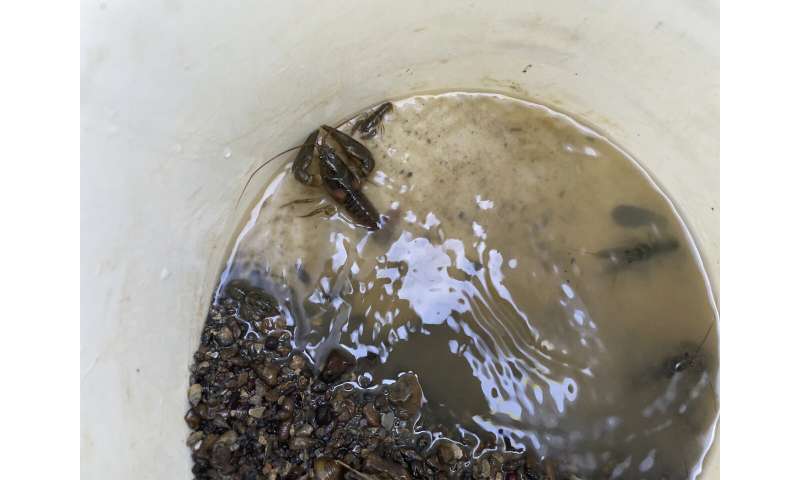This article has been reviewed according to Science X's editorial process and policies. Editors have highlighted the following attributes while ensuring the content's credibility:
fact-checked
reputable news agency
proofread
For the endangered Nashville crayfish, its rebound is both good and bad news

Dale McGinnity has been turning over rocks in Mill Creek to study the endangered Nashville crayfish for a decade. He hopes to learn whether this little crustacean that makes its home mainly in the urbanized area around its namesake city is being harmed by all the development surrounding it. The results are encouraging.
"Things are looking good so far," said McGinnity, who works at the Nashville Zoo as curator of ectotherms, or cold-blooded creatures. "It's been a really nice, maybe steady or slightly increasing population over those 10 years."
But that good news is also potentially bad news. The U.S. Fish and Wildlife Service proposed removing the Nashville crayfish from the endangered species list in 2019, and that proposal is still being considered. A healthy and robust population could add to the pressure to remove it. But some biologists argue the Nashville crayfish still needs protection because species with very small ranges are more vulnerable to extinction, for a variety of reasons.
McGinnity credits the current healthy population to recent changes to stormwater regulations. Runoff from parking lots, buildings and other hard surfaces now drains to bioretention areas, where it is slowly reabsorbed into the ground.
"The old guidelines, it was just all a whole bunch of impervious surfaces that ran to the storm drains that went right to the creek. So that means there's huge flooding. There's huge amounts of oil and other toxins that get into the water."

On Tuesday, McGinnity and a crew from the zoo were at Mill Creek for their annual population survey. Sycamores and maple trees shaded the shallow, rippling water filled with the flat limestone rocks that crayfish love to hide under. It did not take long before the group began spotting them.
One of the things that makes the Nashville crayfish unique, McGinnity said, is that they will hang out in open areas in broad daylight during the summer months. Most crayfish—also called crawfish or crawdads, depending on the region—are primarily active at night. The behavior seems as though it would make them vulnerable to predators, and why they do it is one of many mysteries scientists have yet to study, he said.
The Nashville crayfish are also unusually sociable, he said, noting that he has found upwards of 60 together under a single rock.
-

Chad Cogburn, of the Nashville Zoo, holds a Nashville crayfish during an annual census of the endangered species on Wednesday, June 11, 2024, in Nashville, Tenn. The U.S. Fish and Wildlife Service is considering removing the Nashville crayfish from the endangered species list, but some biologists argue it still needs protection because its range is so limited. Credit: AP photo/Travis Loller -

Several crayfish are captured in the bottom of a bucket during an annual census of the Nashville crayfish, an endangered species, on Wednesday, June 11, 2024 in Nashville, Tenn. The U.S. Fish and Wildlife Service is considering removing the Nashville crayfish from the endangered species list, but some biologists argue it still needs protection because its range is so limited. Credit: AP photo/Travis Loller
"There's still a lot to be learned about Nashville crayfish, and actually all crayfish," McGinnity said. There's no better place to study them than Tennessee, or possibly Alabama. The two states vie for the title of the most crayfish diversity in the world. Both states have more than 100 species, with new ones still being discovered and described, he said.
Parker Hildreth, a biologist with the Tennessee Wildlife Resources Agency, has recently been using genetic testing to help map that diversity. Hildreth said he grew up playing with crayfish in a Tennessee creek and recently discovered that those same crayfish he played with may be an undescribed species.
Asked why the public should care about crayfish, Hildreth offered two thoughts.
"Aquatic organisms are the canary in the coal mine for water quality. So if you're seeing impacts to our native species, then the same things that are affecting aquatic life can easily affect human life," he said. The second reason is cultural and goes back to his childhood.
"I think that's intrinsic to most Tennesseans, that we grew up playing in a creek," he said. "And I wouldn't like to live in a world where I wasn't able to do that."
© 2024 The Associated Press. All rights reserved. This material may not be published, broadcast, rewritten or redistributed without permission.





















